Slavery in Louisiana
The roots of slavery in Louisiana stretch back to the early 18th century, when the territory was part of French Louisiana, a colonial holding that expanded the French empire into the Gulf Coast. From these colonial beginnings, slavery grew into an economic and social institution of massive scale and brutality, laying the foundation for what scholars call the slavery industrial complex. This system shaped Louisiana’s social structure, economic engine, political institutions, and cultural life. It remains today not merely a relic of the past but a living presence embedded in Louisiana’s educational systems, corporate wealth, and demographic legacies.
Slavery in Louisiana began formally with the Code Noir, a set of laws implemented by the French in 1724 to regulate the conduct of enslaved Africans and their owners. This code, while ostensibly offering limited protections to the enslaved, in practice enshrined a brutal regime of forced labor and social dehumanization. The transatlantic slave trade poured thousands of enslaved Africans into Louisiana through the port of New Orleans, which rapidly became a central hub for the domestic slave trade after the United States acquired the territory through the Louisiana Purchase in 1803. With the expansion of the cotton and sugarcane industries, Louisiana’s demand for slave labor soared. Unlike in some other Southern states, where cotton dominated, Louisiana’s low-lying and marshy geography made it ideal for the cultivation of sugar, a crop that required immense labor and led to extraordinarily high death rates among enslaved workers.
By the 1830s, Louisiana was the leading producer of sugar in the United States, and the number of enslaved persons in the state grew exponentially. The plantation economy thrived on the backbreaking labor of enslaved Africans and their descendants, whose work under inhumane conditions enriched a small class of white planters and industrialists. These economic beneficiaries built vast empires of land, capital, and political power, creating a society where white supremacy was both a legal mandate and a social imperative. Enslaved people were not only forced to perform agricultural labor but were also pressed into skilled trades, domestic service, and the construction of public infrastructure. Their labor built the levees of the Mississippi River, laid the foundations of Louisiana’s towns and cities, and produced the economic surplus that funded banks, universities, and shipping companies.
The slavery industrial complex in Louisiana was not limited to plantation agriculture. A web of secondary industries—including textile mills, banks, insurance companies, shipping enterprises, and law firms—developed in symbiosis with the slave economy. Banks in New Orleans, for example, provided loans to planters using enslaved persons as collateral, effectively commodifying Black bodies as financial instruments. Insurance companies offered policies on the lives of enslaved workers, further embedding their labor into the speculative capitalist machinery.
The Port of New Orleans became one of the largest slave-trading markets in the country, a place where families were ripped apart on auction blocks, and human beings were evaluated, bought, and sold like livestock. The legal system facilitated these transactions and upheld the rights of slaveholders while denying any semblance of humanity or agency to the enslaved. Lawyers, judges, and lawmakers were complicit in crafting and enforcing a legal regime designed to perpetuate racial slavery indefinitely.
The migration of enslaved people into Louisiana intensified following the 1808 federal ban on the transatlantic slave trade. A domestic slave trade flourished, and Louisiana became a primary destination for enslaved people forcibly relocated from the Upper South, especially Virginia, Maryland, and the Carolinas. These enslaved men, women, and children were often marched in coffles—groups chained together and forced to walk hundreds of miles—or transported in overcrowded slave ships down the Mississippi River.
New Orleans emerged as a central depot in this internal trade, with slave pens and auction houses proliferating throughout the city. Enslaved people who arrived in Louisiana were subject to uniquely brutal working conditions, particularly in sugar plantations, where the life expectancy was considerably shorter than in cotton-producing areas. The constant influx of enslaved labor sustained Louisiana’s agricultural and industrial expansion while deepening the region’s commitment to white supremacy and economic exploitation. Slavery in Louisiana was intertwined with the displacement and dispossession of Indigenous peoples, particularly in the wake of the Indian Removal Act of 1830. This federal law, signed by President Andrew Jackson, led to the forced relocation of Native American tribes from their ancestral lands in the southeastern United States to territories west of the Mississippi River. Though commonly associated with the “Trail of Tears” experienced by the Cherokee and other Southeastern tribes, the implications of Indian Removal extended directly into Louisiana.
The Caddo, Choctaw, and other Indigenous nations that occupied lands in present-day Louisiana were coerced into ceding their territories through fraudulent treaties, military force, and economic manipulation. These lands were then sold to white settlers and speculators, many of whom established plantations worked by enslaved Africans. Thus, the land theft from Native Americans and the enslavement of African people were conjoined processes in the making of Louisiana’s racial and economic order. Moreover, many Native Americans who were removed or dispossessed of their land came into contact with enslaved African Americans during and after the Trail of Tears. In some cases, enslaved Africans were also relocated alongside their enslavers into what became Indian Territory, further entrenching the practice of slavery among certain tribes who themselves held enslaved people. In Louisiana, the legacy of Indian Removal and Black slavery intersected in ways that created overlapping histories of resistance and resilience. Some Native American communities offered sanctuary to runaway slaves, while others, under pressure or persuasion, adopted plantation-style agriculture and slavery themselves. These complex entanglements underscore how Louisiana served as a crucible of imperial, racial, and economic violence sanctioned by state and federal policies.
Despite the oppressive machinery arrayed against them, enslaved people in Louisiana resisted in ways both overt and covert. The most notable act of rebellion was the German Coast Uprising of 1811, the largest slave revolt in U.S. history. This insurrection, led by Charles Deslondes and others, saw hundreds of enslaved Africans march toward New Orleans with the aim of overthrowing the plantation regime. Although the revolt was ultimately crushed, and its leaders executed in gruesome fashion, it sent shockwaves through Louisiana’s white elite and revealed the ever-present threat of organized resistance. Enslaved people also engaged in everyday acts of defiance, such as feigning illness, sabotaging equipment, working slowly, escaping into swamps and bayous, and maintaining cultural traditions in secret. These acts of resistance preserved a sense of identity and autonomy in the face of dehumanization and helped sustain communities through generations of bondage.
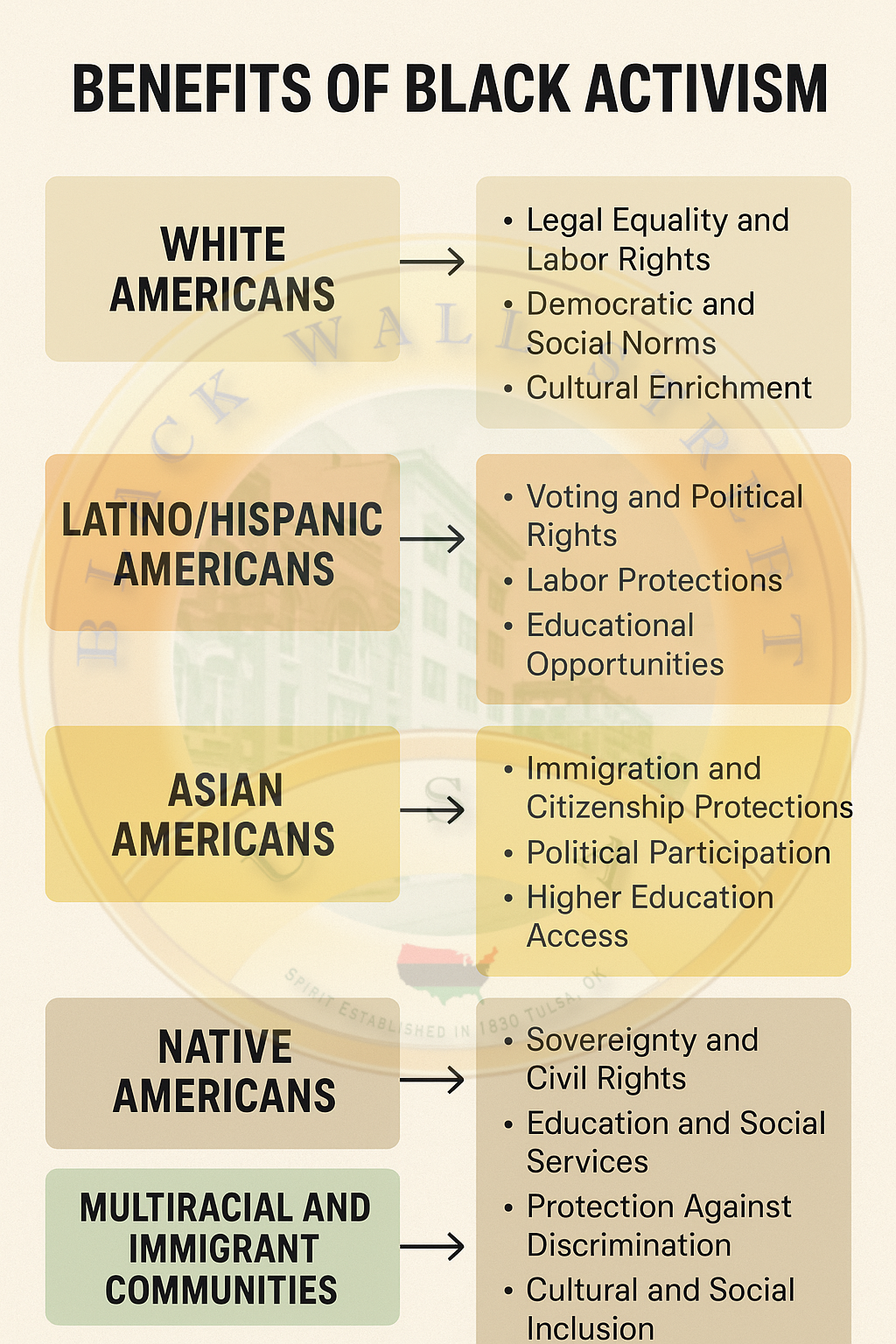
Slave narratives from Louisiana offer profound insights into the lived experiences of those who endured and resisted slavery. These accounts, collected by the Federal Writers’ Project during the 1930s, reveal the brutality of plantation life, the strength of familial bonds under duress, and the ingenuity of cultural survival. Individuals such as Fountain Hughes, a former slave interviewed in his old age, described the indignities of slavery and the profound sense of loss and longing for freedom. Narratives from formerly enslaved Louisianans frequently reference the violence of overseers, the constant threat of family separation, and the ways in which religion, music, and folklore provided solace and subversion. These oral histories, though mediated by time and interviewers’ biases, remain essential documents of Black endurance and memory.
The Civil War brought formal emancipation, but freedom in Louisiana was far from immediate or absolute. The Union Army occupied New Orleans in 1862, making it one of the first Southern cities to come under federal control. While this occupation led to the early application of emancipation policies, it also exposed the limits of Union commitment to racial justice. Formerly enslaved people faced new forms of labor coercion, including the imposition of vagrancy laws and labor contracts that mimicked slavery. The Freedmen’s Bureau, established in 1865, was tasked with assisting freed people by facilitating labor contracts, providing education, and resolving disputes. In Louisiana, the Bureau’s efforts were met with fierce resistance from former slaveholders, white supremacist groups, and local authorities determined to restore racial hierarchy.
Despite these challenges, the Freedmen’s Bureau played a pivotal role in establishing schools for Black children and adults, protecting the rights of laborers, and documenting abuses. Black Louisianans seized on the opportunities offered by Reconstruction to build institutions, elect representatives, and demand land and citizenship rights. Individuals such as Oscar J. Dunn, who became the first Black lieutenant governor of Louisiana, and P.B.S. Pinchback, who served briefly as the state’s governor, exemplify the possibilities and limitations of Black political engagement during this era. Their achievements were made possible by the sacrifices of countless unnamed freedom fighters who organized schools, churches, and mutual aid societies in the face of white terrorism and economic deprivation.
However, the gains of Reconstruction were violently undone through the rise of the Ku Klux Klan, white paramilitary groups such as the White League, and the systematic disenfranchisement of Black voters. By the end of the 19th century, Louisiana had instituted a Jim Crow regime that criminalized Black life, segregated public institutions, and re-enslaved Black laborers through the convict lease system. Many of the same corporations, universities, and landowning families that had profited from slavery adapted to the new racial order by investing in industries that continued to exploit Black labor. These institutions did not disappear with emancipation; rather, they reconstituted themselves as part of a larger system of racial capitalism.
Even today, the legacies of slavery in Louisiana are deeply embedded in the state’s economic and educational structures. Corporations such as Whitney Bank (now Hancock Whitney), and energy companies with roots in the plantation South, built their wealth on the foundations of slavery and continue to benefit from generational capital. Universities such as Louisiana State University and Tulane University occupy land once worked by enslaved people and were historically funded by donors and politicians who derived their wealth from the slave economy. These institutions have only recently begun to acknowledge their ties to slavery, often under pressure from activists and scholars. The acknowledgment, however, has yet to translate into meaningful reparative justice or restitution.
Black abolitionists, civil rights laborers, and freedom fighters from Louisiana have carried forward the struggle for justice across generations. Activists such as Homer Plessy, who challenged racial segregation in the landmark Plessy v. Ferguson case, and Ruby Bridges, who desegregated a New Orleans school as a young girl, represent the continuity of resistance from slavery to the present day. The civil rights movement in Louisiana was marked by student activism, labor organizing, voter registration drives, and legal challenges to white supremacy. Organizations like the Congress of Racial Equality (CORE) and the Deacons for Defense and Justice, which emerged in Louisiana, exemplify the state’s role as a battleground for civil rights and Black liberation.
As the Reconstruction era unraveled in Louisiana under the weight of white violence, federal neglect, and Northern retreat from racial justice, Black life in the state entered a new phase of coerced labor and social repression under the Jim Crow regime. Sharecropping and tenant farming became the economic framework through which formerly enslaved people were economically re-enslaved, trapped in cycles of debt and poverty that mirrored the unfreedom of chattel slavery.
Planters maintained dominance through control of land and credit, often ensured by local merchants, judges, and law enforcement officers who upheld racial hierarchies in both courtroom and cotton field. Despite the formal end of slavery, the plantation economy was only slightly modified in its operation. The enslaver’s whip had given way to the landlord’s ledger, but the essential relations of exploitation persisted.
Convict leasing in Louisiana deserves special attention, for it extended the economic logic of slavery under the guise of penal labor. After the passage of Black Codes and vagrancy laws, which criminalized Black life and mobility, thousands of African Americans were arrested for minor or fabricated offenses and leased out to private companies, railroads, and planters. Angola Prison, one of the most notorious correctional facilities in the United States, sits on the site of a former slave plantation and continues to symbolize this continuum.
Known as "The Farm," Angola was named after the African country from which many of its original enslaved workers had been taken. The prison was—and still is—surrounded by vast fields where incarcerated men, the majority of whom are Black, labor under conditions strikingly similar to those endured by their enslaved forebears. For generations, Louisiana’s criminal justice system has served as a mechanism of racial control, producing profits for the state and private enterprise alike.
In examining the cultural afterlife of slavery in Louisiana, one cannot ignore the rich and defiant traditions that Black communities developed in the crucible of bondage and segregation. The spirituals, blues, and jazz that emerged from New Orleans and the Mississippi Delta speak to a legacy of creative resistance and collective memory. Congo Square in New Orleans became a sanctuary for enslaved and free Black people to dance, drum, and preserve their African heritage under the watchful eyes of colonial authorities. These cultural forms—infused with African rhythms, Christian hope, and the pain of oppression—provided the language through which enslaved people articulated their suffering and aspirations for freedom. These traditions, though commodified by the white tourism industry, remain acts of cultural sovereignty and historical testimony.
Slave religion in Louisiana developed as a synthesis of West African spiritual practices, Christianity, and Catholic iconography. Unlike many other states, Louisiana’s Catholic colonial history allowed for a different religious framework in the development of Black religious life. Enslaved people in Louisiana often integrated Catholic saints with African deities, resulting in spiritual systems such as Louisiana Voodoo. Figures like Marie Laveau, the famed Voodoo Queen of New Orleans, straddled lines of faith, resistance, and political influence, commanding respect from both Black and white residents in the 19th century. Her existence reflects the complexity of spiritual survival and cultural expression in a state whose laws sought to crush African identity. These religious traditions not only provided solace but became mediums for encoded resistance, prophecy, and clandestine communication.
The trauma of slavery, displacement, and systemic disenfranchisement also reverberated through family life. Louisiana’s slave economy had been especially ruthless in separating families, with the internal slave trade shattering kinship networks across state lines. Parents were sold away from children, siblings split apart, and spouses permanently separated. After emancipation, one of the first acts of freedpeople was to search for lost relatives. Thousands placed advertisements in newspapers, walked for miles across parishes, and wrote letters in hopes of reuniting with loved ones. This search for family was both an act of healing and a quiet indictment of the system that had treated Black lives as fungible property. Though many searches ended in heartbreak, the effort itself was a form of moral resistance to the dehumanizing legacy of slavery.
The economic dividends of Louisiana’s slave system extended well into the twentieth century and remain visible today in the wealth accumulation of white families, corporations, and institutions. Some sugarcane plantations still in operation trace their ownership back to families who enslaved people. Major companies headquartered in Louisiana, such as Entergy Corporation and regions of ExxonMobil, have infrastructural and capital roots in industries historically tied to slave labor. Agricultural conglomerates that dominate the delta regions often operate on land cleared and cultivated by enslaved laborers, profiting off the sweat and blood of generations past without acknowledgment or restitution.
Institutions of higher education in Louisiana also benefited directly from the economic systems built on slavery. Tulane University, for example, was founded by Paul Tulane, a wealthy merchant and slaveholder who enriched himself through trade and land speculation. His donation to establish Tulane was made possible by the economic surpluses generated from Black labor. Similarly, Louisiana State University (LSU) was built in part on land grants and tax revenues derived from plantation economies. The school also used enslaved laborers to construct its early buildings. Despite recent efforts to confront these legacies, both institutions have largely avoided meaningful reckoning with their pasts, limiting reparative gestures to symbolic acknowledgments or modest historical commissions.
The impact of the Trail of Tears and the Indian Removal Act on Louisiana extended beyond the expropriation of Indigenous lands for white planters. Many of the relocated tribes, including the Choctaw, Chickasaw, and Muscogee (Creek), passed through or resettled in Louisiana territory during their forced migration to Indian Territory. This movement was not just a geographical displacement but a form of cultural and political erasure designed to free up land for slaveholding expansion. The policy also created new social tensions, as enslaved people often encountered Native American tribes who had also been pressured or persuaded to adopt slavery. The resulting interactions were complex, ranging from solidarity and intermarriage to subjugation and racial stratification within tribal communities.
In some Louisiana regions, particularly along the Red River and in parts of northern Louisiana, the forced removal of Native Americans was followed almost immediately by the establishment of large-scale plantations. The land, often lush and rich in natural resources, became highly profitable for cotton and sugar cultivation. The expropriation of Native land, combined with the expansion of the domestic slave trade, fueled Louisiana’s meteoric rise as a Southern economic powerhouse in the antebellum years. This pattern of settler colonialism and racial capitalism created a dual legacy of Indigenous displacement and African enslavement, two pillars of American empire that converged most violently in the Gulf South.
Louisiana’s political class was deeply embedded in and supportive of the slave system. Politicians, judges, and local officials were frequently plantation owners or directly connected to the slave trade. They used their positions to craft laws that defended slavery, undermined Black resistance, and maintained white supremacy. Even after emancipation, many of these political leaders transitioned seamlessly into the postbellum regimes of segregation and disenfranchisement. The continuation of white elite power after slavery was not accidental but systematically orchestrated through policy, violence, and social control. These officials shaped the economic and legal contours of the state, ensuring that the fruits of Black labor continued to enrich white hands.
Legal institutions in Louisiana also played an outsized role in upholding slavery’s legacy. The state’s unique blend of French civil law and American common law allowed for a particularly codified form of racial discrimination. Laws were meticulously written to determine who was considered Black, who could be enslaved, and how property—including enslaved humans—could be transferred and inherited. The legal infrastructure was designed to deny enslaved people any access to citizenship, testimony, or bodily autonomy. After the Civil War, the legal apparatus pivoted to restrict Black freedom in new ways, including the enforcement of curfews, segregation statutes, and voter suppression laws. These systems did not disappear with the civil rights movement but instead evolved into new forms of racial control, such as mass incarceration and school resegregation.
The struggle for civil rights in Louisiana continued the unfinished work of emancipation and abolition. In the mid-20th century, leaders like A. P. Tureaud, a New Orleans attorney who worked with the NAACP Legal Defense Fund, played a pivotal role in challenging segregation and advocating for educational equity. He helped bring several lawsuits that laid the foundation for desegregating Louisiana schools and public facilities. Tureaud’s work, like that of earlier abolitionists, was carried out in a hostile environment of white backlash and institutional resistance. Students at Southern University in Baton Rouge staged sit-ins and demonstrations demanding integration and equal treatment, while churches and community groups organized voter registration drives across rural parishes.
The Deacons for Defense and Justice, founded in Bogalusa, Louisiana, in 1964, represented a powerful shift in the civil rights movement toward self-defense. This all-Black organization formed to protect civil rights activists from white supremacist violence, particularly that of the Ku Klux Klan and local police. They patrolled neighborhoods, guarded churches, and trained in firearms to ensure the safety of marchers and organizers. Their presence challenged the myth that the civil rights movement was entirely nonviolent and highlighted the need for self-protection in the face of unrelenting racial terror. The Deacons drew on a long tradition of Black militancy rooted in the history of slave revolts, Reconstruction defense leagues, and World War II veterans returning to fight Jim Crow with a new sense of dignity and skill.
In rural areas of Louisiana, resistance took quieter but equally meaningful forms. Black farmers who managed to retain or acquire land after Reconstruction formed cooperative networks, shared agricultural tools, and resisted displacement by predatory lenders and white landlords. The importance of land ownership in the Black freedom struggle cannot be overstated, especially in a state where land had historically symbolized the ultimate form of power. Black landowners faced legal harassment, intimidation, and outright violence, but many persisted, building intergenerational wealth and spaces of autonomy that sustained community life. Their stories, often omitted from dominant historical narratives, are integral to understanding the long struggle against the plantation system and its inheritors.
As Louisiana entered the 21st century, the shadows of slavery remained evident in its education system, economic inequality, environmental degradation, and prison infrastructure. Public schools in many parts of the state remain deeply segregated and underfunded, particularly in predominantly Black communities. Access to healthcare, clean air, and housing is still racially stratified. "Cancer Alley," a stretch of the Mississippi River lined with petrochemical plants, disproportionately affects Black residents living in historic plantation regions. These environmental injustices are not coincidental but rooted in historical patterns of land use, zoning, and racialized neglect. The toxic industries that replaced cotton and sugar continue to exploit Black labor and sacrifice Black health in the name of profit.
The environmental racism in Louisiana’s river parishes—particularly the area between Baton Rouge and New Orleans, dubbed “Cancer Alley”—is a modern manifestation of the plantation legacy. Many of the petrochemical plants that line this corridor now stand on the very lands once worked by enslaved people. These sites, formerly sugarcane plantations, transitioned after the Civil War and Reconstruction into industrial zones, often with little regard for the health and well-being of the Black communities still living nearby. Descendants of enslaved families frequently reside within miles of these toxic industries, suffering from disproportionate rates of cancer, respiratory diseases, and birth defects. The state’s lax environmental regulations and deep corporate-political entanglements have allowed this crisis to persist, revealing how Black suffering remains commodified within a system of racial capitalism that began under slavery.
The role of memory and historical reckoning is crucial in confronting this enduring legacy. For years, Louisiana failed to properly acknowledge the breadth and brutality of its slaveholding past. Official histories downplayed the centrality of slavery to the state’s wealth and growth, instead emphasizing narratives of antebellum gentility, Confederate valor, and economic ingenuity. Plantation homes like Oak Alley and Laura Plantation were for decades presented to tourists as genteel Southern estates, where the suffering of the enslaved was either glossed over or presented in sanitized terms. Only recently have some historic sites begun to center the experiences of enslaved people, offering tours that address their labor, resistance, and daily lives in more truthful and comprehensive ways. Still, many other sites continue to profit from whitewashed versions of history that erase the violence and degradation upon which they were built.
Efforts at reclaiming history and demanding justice have been led largely by Black scholars, artists, and community organizers. Museums like the Whitney Plantation have taken a groundbreaking approach by presenting slavery not as a backdrop but as the central narrative. At Whitney, the names of enslaved people are inscribed on walls, slave cabins are preserved, and guided tours emphasize personal stories and the human toll of the plantation system. This approach challenges visitors to confront the atrocities of slavery and disrupts romanticized images of the Old South. The Whitney Plantation stands in stark contrast to other sites that continue to host weddings and events on former slave grounds without any acknowledgement of the pain embedded in the soil.
Grassroots movements have also taken root in Louisiana’s Black communities, where descendants of enslaved people are demanding recognition, land rights, and reparative justice. Organizations like RISE St. James have resisted the construction of new industrial plants on land adjacent to historic slave cemeteries and Black neighborhoods. Led by environmental activist Sharon Lavigne, RISE St. James has highlighted how the legacies of slavery, segregation, and environmental violence are inseparably linked. Their activism represents a contemporary continuation of the resistance that began with enslaved Africans who fought to preserve their humanity in the face of dehumanization. Through marches, lawsuits, and public education campaigns, these modern freedom fighters carry the torch of justice into the 21st century.
Louisiana’s political structures, long steeped in white supremacist ideology, have often been obstacles to addressing the state’s legacy of slavery. Gerrymandering, voter suppression, and structural underrepresentation have ensured that Black communities have little political power relative to their population. Despite these challenges, Black Louisianans have persistently fought for enfranchisement and fair governance. In recent decades, cities like New Orleans have elected Black mayors, school board members, and state representatives, but rural parishes remain deeply segregated and controlled by conservative power brokers who resist any reckoning with the past. The disconnect between urban and rural Louisiana reflects not just demographic differences but the long-standing disparities created by the slave economy and its aftershocks.
Education remains one of the most contested terrains in this historical landscape. Public schools in Black-majority parishes are often underfunded, poorly maintained, and staffed with inexperienced teachers. Curricula frequently omit or distort the history of slavery, Reconstruction, and civil rights, depriving students of the knowledge needed to understand the roots of inequality in their own communities. Textbooks approved by state boards have been criticized for minimizing the violence of slavery or framing it as a benign labor system. Teachers who attempt to address these issues openly may face backlash from parents, administrators, or even legislation designed to restrict “divisive” topics. In this climate, the legacy of slavery is not just a historical subject but a political flashpoint that reveals the state’s unresolved racial wounds.
Nevertheless, Black educators and cultural workers in Louisiana have created alternative spaces for learning and truth-telling. Freedom schools, community libraries, and oral history projects have preserved the voices of those excluded from official narratives. Storytellers and griots have carried forward traditions of resistance through music, performance, and communal memory. These cultural forms represent a living archive that stands in opposition to erasure. They remind us that history is not merely what is written in textbooks or carved into monuments, but what is carried in bodies, passed down in families, and spoken aloud in kitchens, churches, and community centers.
Monuments and memorials in Louisiana reflect the state’s conflicted relationship with its past. Statues of Confederate generals and slaveholding politicians long dominated public spaces, casting white supremacy in bronze and stone. For decades, Black citizens were forced to walk past these symbols of racial subjugation, reminders of a system that sought their permanent exclusion from the body politic. The removal of Confederate monuments in New Orleans in 2017, including those honoring Robert E. Lee, Jefferson Davis, and P.G.T. Beauregard, marked a turning point in public memory. These actions, driven by years of Black activism and led by then-Mayor Mitch Landrieu, were met with both praise and violent backlash. They revealed the depth of white attachment to the mythologies of the Old South and the volatility of confronting historical truth.
However, taking down monuments is only the beginning. True reconciliation requires a redistribution of power, wealth, and opportunity—something Louisiana has yet to seriously pursue. While the removal of statues can symbolize a break with the past, without policy change and reparative action, such gestures risk becoming performative. Reparations debates in Louisiana, as elsewhere in the United States, remain contentious but increasingly necessary. Black communities have called for land restitution, direct cash payments, debt forgiveness, education subsidies, and community investment as a means of repairing the economic and social damage caused by centuries of forced labor and racial discrimination. These demands are not new; they echo the unfulfilled promises of Reconstruction, when “forty acres and a mule” were proposed but never delivered to freedpeople.
The religious institutions in Louisiana also played a dual role during and after slavery. On one hand, churches were often complicit in slavery’s perpetuation, with white clergy using biblical texts to justify the enslavement of Africans and the submission of Black people to white authority. On the other hand, the Black church emerged as one of the most powerful institutions for resistance, survival, and organizing. During slavery, secret prayer meetings and “invisible churches” allowed enslaved people to gather, worship, and build spiritual and communal strength outside of the master’s gaze. After emancipation, Black churches provided schools, social services, and political leadership. Figures such as Bishop Henry McNeal Turner and Father John Henry Burch Sr. exemplified the fusion of faith and freedom struggle in Louisiana’s religious history.
The influence of the Black church extended into the civil rights movement, where pastors and congregations became hubs of activism and mutual aid. Church leaders organized voter registration drives, hosted freedom schools, and served as spokespeople for their communities. The spirituals and gospel songs sung in Louisiana’s churches echoed the chants of those who had once sung to survive slavery. The theological frameworks developed in these churches emphasized liberation, justice, and God’s presence among the oppressed. Even today, Black churches in Louisiana remain vital centers of cultural identity and political mobilization, though they too face the pressures of gentrification, economic precarity, and generational change.
The erasure and distortion of Louisiana’s slavery history in mainstream discourse is compounded by the entertainment industry, which has often profited from romanticized depictions of the antebellum South. Films, novels, and television shows have contributed to a cultural amnesia that downplays the horror of slavery and foregrounds the experiences of white characters. Stories set on plantations are frequently framed as tales of love, loss, or Southern charm, obscuring the violence that defined those spaces. Even in Louisiana’s robust tourism industry, plantation tours have historically centered architecture and lineage rather than brutality and resistance. This cultural sanitization serves to protect white innocence and economic interests at the expense of historical truth.
Yet there are powerful counter-narratives being produced by Black artists and scholars. Writers like Ernest Gaines, author of The Autobiography of Miss Jane Pittman and A Lesson Before Dying, have illuminated the lives of Black Louisianans in ways that challenge dominant myths. Gaines, himself a descendant of enslaved people who worked on a plantation in Pointe Coupee Parish, wrote with deep empathy and historical insight about the legacies of slavery and racism. His work, along with that of contemporary poets, playwrights, and filmmakers, continues to expand the cultural memory of slavery in Louisiana, insisting on the humanity of the enslaved and the legitimacy of Black suffering and resistance.
Slavery in Louisiana was not an aberration or a peripheral institution—it was central to the state’s identity and development. The wealth of New Orleans, once the largest slave market in the Deep South, was built on human trafficking, forced labor, and the relentless commodification of Black bodies. The banks, businesses, and infrastructure that arose from this system did not vanish with emancipation but evolved to meet the demands of modern capitalism. Understanding Louisiana today requires acknowledging this continuity, recognizing how past injustices shape present disparities in wealth, health, education, and incarceration.
The descendants of enslaved people in Louisiana carry this legacy in their DNA, their surnames, their memories, and their resistance. They also carry the burden of explaining, again and again, a history that white institutions have chosen to forget. Yet despite this burden, Black Louisianans have not only survived but transformed the state. Their contributions to music, cuisine, literature, religion, politics, and culture have defined what Louisiana is in the global imagination. From jazz to gumbo, from Congo Square to Southern University, from sugarcane fields to freedom schools, their legacy is indelible and sacred.
This legacy demands more than acknowledgment—it calls for transformation. Transformation means reallocating resources to communities long denied investment. It means telling the truth in classrooms, courtrooms, and boardrooms. It means preserving historic sites not as tourist attractions but as places of mourning, reflection, and education. It means honoring the dignity of the enslaved by dismantling the systems that continue to devalue Black life. The story of slavery in Louisiana is not finished, because its consequences remain alive in the laws, landscapes, and lives of the present. The task now is not simply to remember, but to repair.
Repair in Louisiana must begin with an honest confrontation of the truth. The truth is that Louisiana was not merely a participant in American slavery—it was one of its principal architects, innovators, and profiteers. The plantations of Louisiana were not remote outposts of agrarian simplicity, but sophisticated centers of economic extraction and racial domination. The people who were enslaved in Louisiana were not passive victims but intellectual, spiritual, and political actors who shaped history from beneath the weight of unfreedom. The institutions, companies, and governing bodies that emerged from this system did not collapse when slavery ended; they adapted, rebranded, and continued to exploit, often under new legal and political guises.
One of the most insidious adaptations of slavery in Louisiana after emancipation was the creation of the racialized carceral state. As early as the 1870s, Louisiana developed a system of criminal justice that disproportionately targeted Black men and funneled them into forced labor through convict leasing. The legal categories changed—from slave to prisoner—but the function remained the same: to control Black labor and bodies for profit. Angola Prison, which continues to operate today, stands as both a literal and symbolic bridge between antebellum slavery and the modern prison-industrial complex. The prison’s vast agricultural fields are worked by incarcerated men for pennies a day, often under armed guard and oppressive conditions. It is not coincidental that many of these men are descendants of the very enslaved Africans who once toiled on these same lands. The architecture of white supremacy has proven devastatingly durable.
Reparations in Louisiana must also address the intergenerational economic harm caused by slavery and its afterlives. Generations of Black Louisianans were denied the opportunity to build wealth through land ownership, fair wages, and access to education. Meanwhile, white families and institutions amassed fortunes that continue to sustain their prosperity. The racial wealth gap in Louisiana is among the highest in the nation. Homeownership rates, access to healthcare, life expectancy, and income levels all reflect the enduring legacy of racial exploitation. Efforts to redress these disparities must go beyond symbolic gestures or diversity programs. Reparations must include substantial material investments: land grants, tuition-free education at state universities for descendants of enslaved people, business grants, guaranteed housing assistance, and legal support for land retention in historically Black parishes.
Land retention is especially urgent in southern Louisiana, where coastal erosion, environmental contamination, and gentrification are displacing Black families at alarming rates. In places like Plaquemines Parish and Terrebonne Parish, Black communities that have lived off the land for generations are being squeezed out by industrial development and climate change. Many of these families never held formal title to the land, relying instead on oral agreements, communal customs, and inherited claims dating back to the postbellum period. Without legal documentation, they are vulnerable to displacement by developers, oil companies, and local governments. Preserving these communities requires legal reforms that recognize and protect communal Black land tenure, along with environmental protections that prioritize resident health and sustainability over corporate profits.
The educational system in Louisiana must also be reimagined as a space of repair. Students should be taught a truthful and complete history of slavery in their state—one that includes the horror and brutality, but also the resistance, resilience, and innovation of enslaved people. History curricula should center the experiences of Black Louisianans and incorporate primary sources such as slave narratives, oral histories, and Freedmen’s Bureau records. Teachers should be trained and supported in delivering culturally competent instruction, and schools should partner with Black communities to develop place-based learning programs that connect students to the land, architecture, and people who shaped their heritage. Education must not only inform, but empower.
Universities in Louisiana, particularly LSU and Tulane, bear a special responsibility to acknowledge and address their historical complicity in slavery and segregation. These institutions should fund research into their own histories, establish endowed scholarships for descendants of enslaved people, return or preserve archival materials related to slavery, and offer courses and degrees that focus on African American history, diaspora studies, and racial justice. They should also support faculty of color, promote inclusive hiring practices, and ensure that their campuses are not merely diverse but genuinely equitable. Reparative justice in higher education is not a political luxury—it is a moral necessity grounded in historical fact.
Faith communities in Louisiana, especially the Catholic Church and historically white Protestant denominations, must also examine their legacies. Many churches owned slaves, rented out enslaved people for profit, or justified slavery from the pulpit. They baptized enslaved people while denying them spiritual equality, marrying them in rituals not legally recognized, and burying them in unmarked graves. These institutions should conduct internal audits of their involvement in slavery, issue public apologies, and allocate funds for community development projects in Black neighborhoods. They should also partner with Black churches to support programs in education, health, housing, and economic development.
Public memorials and monuments must be expanded to include not just Confederate generals or slaveholding politicians, but the names and stories of enslaved people themselves. Streets, schools, and public buildings named after slaveowners and segregationists should be renamed in honor of Black freedom fighters. Louisiana’s historical commission should be restructured to include Black scholars and community leaders, and its mandate should be expanded to preserve and promote the full spectrum of state history. The state should fund oral history projects that record the memories of elders in Black communities, particularly in rural parishes, and establish museums and cultural centers that highlight the contributions of African Americans to Louisiana’s development.
The private sector has a role to play as well. Corporations that benefited from slavery—either directly through ownership or indirectly through supply chains and financial investments—must participate in reparations. This includes banks, insurance companies, law firms, and manufacturers with roots in the antebellum economy. These entities should disclose their historical records, publicly acknowledge their complicity, and commit to reinvestment in the communities their predecessors exploited. Reparations could take the form of community trust funds, workforce development programs, direct financial restitution, or long-term investment in Black-owned enterprises. Corporate responsibility should not be a matter of public relations but of moral reckoning and institutional accountability.
The descendants of enslaved people in Louisiana should be at the center of all reparative efforts. Too often, policy discussions and historical commemorations are conducted without the voices of those most affected. Community listening sessions, participatory budgeting, and grassroots advisory boards should guide the design and implementation of reparations programs. Reparations must be co-created, not imposed. They must reflect the specific histories, needs, and aspirations of Louisiana’s Black communities, which are not monolithic but rich in diversity of thought, geography, and experience.
Cultural production must also be a site of reclamation. Black artists in Louisiana—poets, musicians, playwrights, dancers, and filmmakers—have long been the guardians of memory and imagination. They have preserved the rhythms, languages, and symbols of ancestral struggle, often in the face of exclusion and appropriation. State and private arts funding should prioritize Black creators, especially those working in rural areas or emerging from working-class communities. Artistic expression is not ancillary to historical repair—it is foundational. Through art, the unspeakable becomes spoken, and the invisible becomes visible. Through art, the ancestors are honored, and the future imagined.
Finally, spiritual healing is essential. The trauma of slavery is not merely historical—it is embodied, intergenerational, and psychic. It lives in the fear of state violence, in the sorrow of premature death, in the ache of unmarked graves, and in the silence of erased names. Healing requires rituals of mourning, remembrance, and reclamation. It requires that we listen to the cries of the earth, which remembers the blood that soaked its soil. It requires that we walk the lands of former plantations with reverence and humility, acknowledging the lives that were stolen and the dreams that were deferred. It requires ceremonies of closure and renewal, rooted in the traditions of the African diaspora and open to all who seek justice.
The story of slavery in Louisiana is not confined to the past. It lives in the bones of the land, in the architecture of institutions, and in the heartbeat of communities still fighting for dignity. It is a story of suffering, but also of resistance. A story of exploitation, but also of creativity. A story of betrayal, but also of enduring love—for family, for freedom, and for the future. The task before us is not only to tell this story truthfully, but to act upon its lessons courageously. We owe it to the ancestors who resisted chains, to the descendants who endure inequity, and to the generations yet unborn who deserve to inherit a Louisiana reconciled with its own soul. Until then, the labor of remembrance and repair must continue—not as a burden, but as a sacred duty.
Afro-Louisiana History and Genealogy 1719-1820

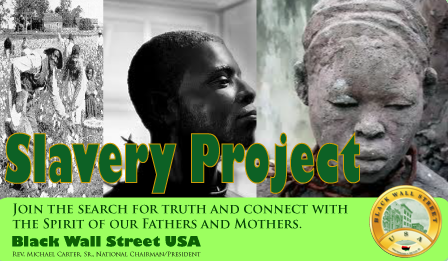
Alabama
Alaska
Arizona
Arkansas
California
Colorado
Connecticut
Delaware
Florida
Georgia
Hawaii
Idaho
Illinois
Indiana
Iowa
Kansas
Kentucky
Louisiana
Maine
Maryland
Massachusetts
Michigan
Minnesota
Mississippi
Missouri
Montana
Nebraska
Nevada
New Hampshire
New Jersey
New Mexico
New York
North Carolina
North Dakota
Ohio
Oklahoma
Oregon
Pennsylvania
Rhode Island
South Carolina
South Dakota
Tennessee
Texas
Utah
Vermont
Virginia
Washington
West Virginia
Wisconsin
Wyoming
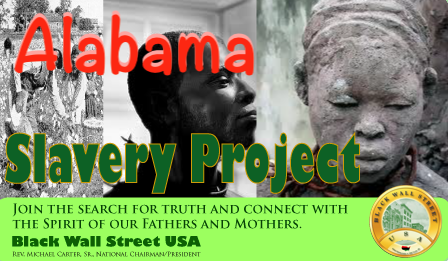
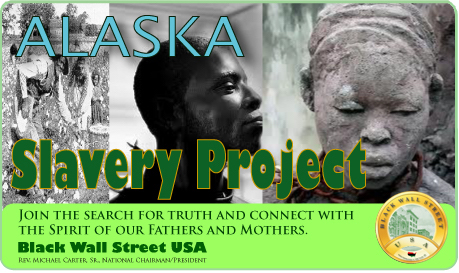



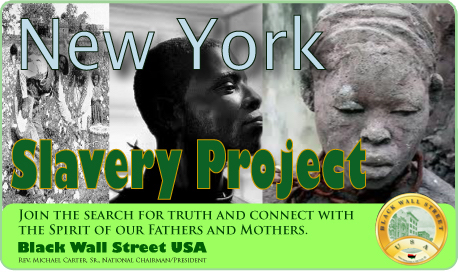

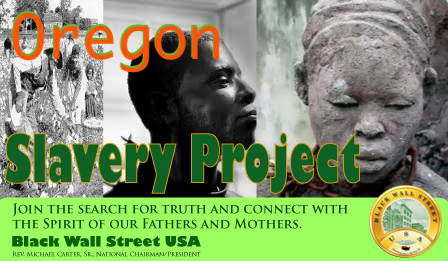
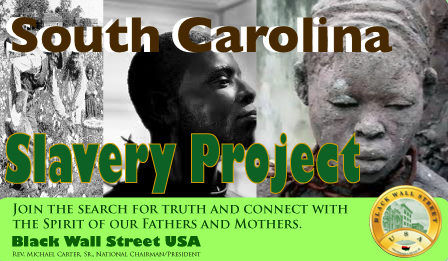
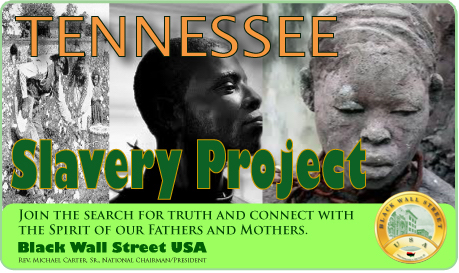
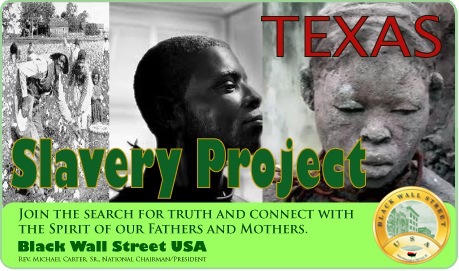



BlackWallStreet.org

Slave Records By State
See: Slave Records By State
Freedmen's Bureau Records
See: Freedmen's Bureau Online
American Slavery Records
See: American Slavery Records
American Slavery: Slave Narratives
See: Slave Narratives
American Slavery: Slave Owners
See: Slave Owners
American Slavery: Slave Records By County
See: Slave Records By County
American Slavery: Underground Railroad
See: American Slavery: Underground Railroad

